February 2022
February 8, 2022
Fingos
A classic business failure. In the early 1990s, the marketing team at General Mills came up with the idea of a cereal that could be eaten without milk any time of day. Despite spending millions to promote it, hardly anyone bought the stuff.From Wikipedia:
As the Gone But Not Forgotten Groceries blog notes: "All cereals can be eaten by hand if you don't add milk."
Posted By: Alex - Tue Feb 08, 2022 -
Comments (2)
Category: Business, Cereal, 1990s
NRA Day Parades
The current era has been compared to the Depression and New Deal under Roosevelt. But what's lacking today as we seek to emerge from the pandemic malaise is--parades!To celebrate "NRA Day," New York City threw a parade that utilized a quarter of a million participants.
But it wasn't just NYC. Smaller places joined in too. Such as Dothan, Alabama. Visit this page for the full account, with lots of great photos.
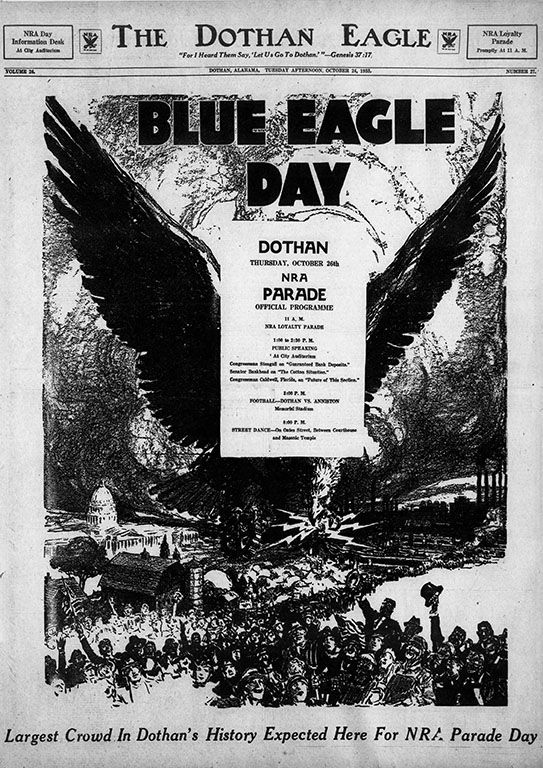
Posted By: Paul - Tue Feb 08, 2022 -
Comments (2)
Category: Government, Money, Parades and Festivals, 1930s
February 7, 2022
The Tennessee Head Banger
Tom Myslinski, who was an offensive lineman for the Tennessee Volunteers, had an unusual pre-game ritual. He would psych himself up by banging his head against doors, cabinets, walls, towel dispensers, etc. Without a helmet.One of his teammates explained that he did this "until his eyes get all bloodshot and, then, blood is pouring from his forehead."
Myslinski noted, "It's just my way to pick up the intensity. To tell you the truth, I have no idea why I do it. Afterwards, sometimes, I say to myself that it sure was stupid because my head hurts."
Myslinski went on to play for nine seasons in the NFL and is now a strength and conditioning coach for the Jacksonville Jaguars.

Kingsport Times - Nov 20, 1991

Arizona Republic - Dec 27, 1991
Posted By: Alex - Mon Feb 07, 2022 -
Comments (2)
Category: Rituals and Superstitions, Sports, 1990s, Brain Damage
Olfactory Art Keller
A small new gallery in NYC that features smell exhibits.Read about it here.
Their homepage.
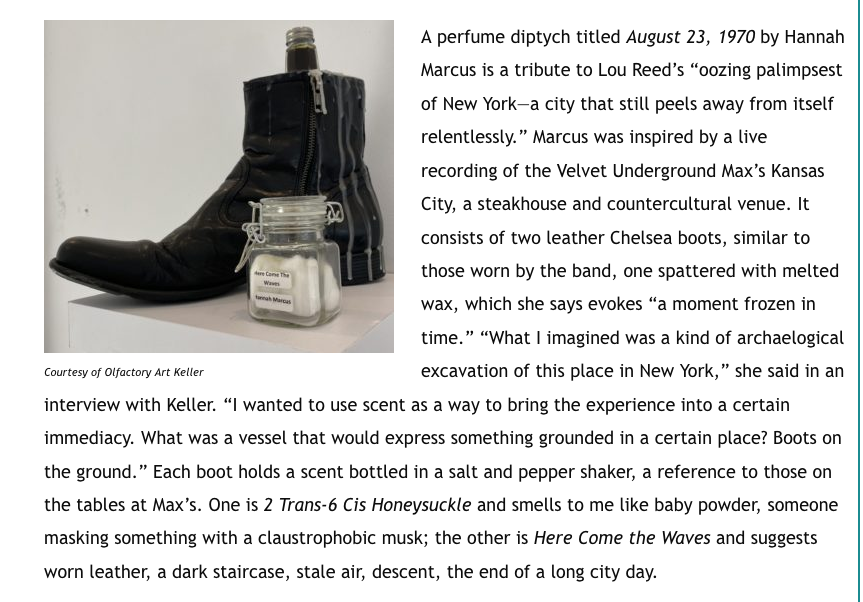
Posted By: Paul - Mon Feb 07, 2022 -
Comments (0)
Category: Art, Museums, Smells and Odors
February 6, 2022
A legendary moment in live theater
During a Dublin production of Gilbert and Sullivan's H.M.S. Pinafore, sometime in early 1986 (or maybe late 1985?), the actor Alan Devlin, who was playing Sir Joseph Porter, abruptly stopped in the middle of his performance, proclaimed, "F... this for a game of soldiers," left the theater, and headed to the pub next door to have a drink, with his microphone still on.Surprisingly, he wasn't fired and was even re-hired for the London production a few months later.
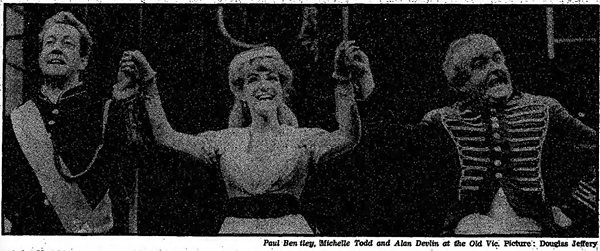
Alan Devlin (right) during the London production of H.M.S. Pinafore
Noel Person, who was the theatrical producer of the play, later described the incident to an Australian journalist (The Melbourne Age - Aug 22, 1986):
"The guy that was playing Dick Deadeye and the girl who was playing Buttercup, well, they freaked. But they were very experienced actors. So they cut to the end of the first half. The understudy was already in the show so they began the second half with him."
Happily, Noel Pearson hired back Mr. Devlin for the show's London season. "I got him to sign a contract in blood: he had to be in the theatre an hour before or he got paid only half his salary until the end of the run; we gave him a minder... When we opened at the Old Vic we had publicity like you never saw. On the opening night, when he appeared on stage, he practically got a standing ovation."
On Twitter, someone who was in the audience that night has posted their memory of what happened. An excerpt below:
Then he tried to leave the coracle. Surmounting he brim of it - about two feet high if my imperfect memory serves - gave him great difficulty. But after a couple of attempts he managed it, and stood center stage, swaying slightly as though in a moderate breeze.
After briefly considering his options, he then announced "ah f*** this for a game of soldiers," hopped down into the orchestra pit (with more adroitness than you'd have expected from his swaying), strode along the central aisle through the audience, and left by the main exit.
Posted By: Alex - Sun Feb 06, 2022 -
Comments (1)
Category: Inebriation and Intoxicants, Theater and Stage, 1980s
Unlikely Reasons for Murder No. 7
Full article here.
Posted By: Paul - Sun Feb 06, 2022 -
Comments (0)
Category: Death, Food, Motor Vehicles, Twenty-first Century
February 5, 2022
Longest fall without a parachute
We've recently had a couple of posts about people surviving long falls. So this post (originally from Jan 2021) seemed relevant.On January 26, 1972, stewardess Vesna Vulovic was working on a Yugoslav Airlines flight when a bomb blew up the plane. She fell 31,000 feet and miraculously survived. No one else on the flight did. She eventually made a near-full recovery and went back to work at the airline, though not as a stewardess. She died in 2016. To this day, she maintains the world record for having made the longest fall without a parachute.
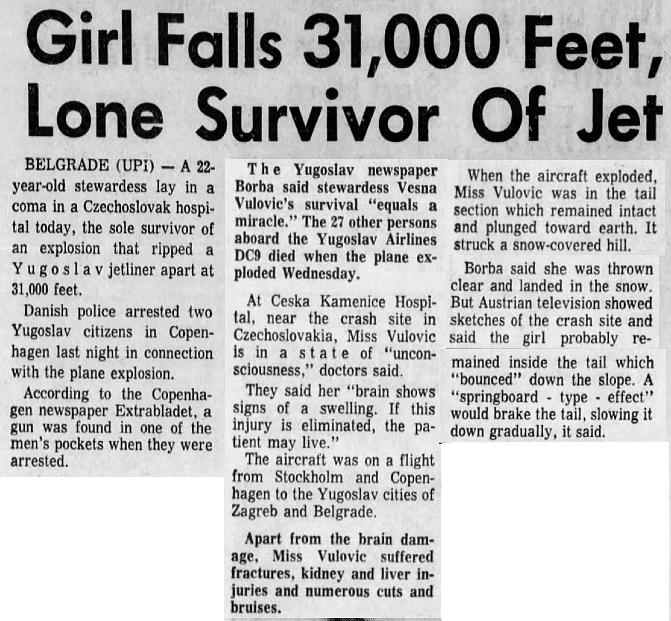
Pittsburgh Press - Jan 29, 1972

Vesna Vulovic. Source: wikipedia
Vulovic is part of a small group of human marvels who have survived very long falls. Another member of this group is English tail gunner Nicholas Alkemade who, in 1944, survived a fall of 18,000 feet out of a Lancaster bomber.
The question of how people are able to survive very-high falls has attracted some scientific interest. The most famous study on this topic, that I'm aware of, was published by Hugh De Haven in 1942: "Mechanical analysis of survival in falls from heights of fifty to one hundred and fifty feet". I've pasted a summary of his study below, taken from Newsweek (Aug 24, 1942). But basically his conclusion was that, if you're falling a long distance, hope that something breaks and cushions your fall.
Obviously, De Haven couldn't subject human guinea pigs to experimental accidents in a laboratory. Instead, he analyzed the records of some remarkably lucky and well-documented falls—cases where men and women dropped from as high as 320 feet (the equivalent of 28 stories) and survived. A few of them:
--A 42-year-old woman jumped from a sixth floor. Hurtling 55 feet, she landed at 37 miles an hour on her left side and back in a well-packed plot of garden soil. She arose with the remark: "Six stories and not even hurt." Her body had made a 4-inch hollow in the earth.
--A 27-year-old girl dropped from a seventh story window and landed head first on a wooden roof. She crashed through, breaking three 6- by 2-inch beams, and dropped lightly to the ceiling below. None of her neighbors knew about the fall until she herself appeared at the attic door and asked assistance. And although one of her vertebrae was fractured, the girl was able to sit up in bed the same day.
--Another woman fell 74 feet, landing flat and face down on an iron bar, metal screens, a skylight, and a metal-lath ceiling. The impact made a 13-inch bend in the 1.5-inch bar, but she suffered only some cuts on her forehead and soreness about the ribs. She sat up and climbed through a nearby window.
--After a 72-foot drop, a 32-year-old woman landed in jackknife position on a fence of wire and wood. She picked herself up and marched to a first-aid station but was unhurt.
--A 27-year-old man fell 146 feet onto the rear deck of a coupe. Some of his bones were broken, but he remained conscious and was back at work within two months.
--A man dropped from a 320-foot cliff to the beach below, bouncing from a sloping ledge halfway down. Although his skull was fractured, he fully recovered. DeHaven noted that the man wore a large coat, which may have slowed his fall by a slight parachute action.
--A woman fell seventeen floors onto a metal ventilator box, landing in sitting position and crushing the metal downward 18 inches. Though both arms and one leg were broken, she sat up and demanded to be taken back to her room.
In this evidence, De Haven observed that (1) in each instance the blow was distributed over a large area of the body, and (2) the fall was not halted abruptly—in the ventilator case, for example, it was slowed through a distance of 18 inches and the impact was thus decreased. Even so, she had survived a force of more than 200 times gravity. By contrast, a person slipping on a sidewalk might crack his skull because hitting the unyielding concrete pavement generated a force of more than 300 times gravity.
Posted By: Alex - Sat Feb 05, 2022 -
Comments (3)
Category: Human Marvels, World Records, 1970s
Pneumonia Blouse
In the early twentieth century, women began wearing low-necked, gauzy blouses. Conservative critics branded them "pneumonia blouses" — warning that they would cause the women wearing them to catch pneumonia.More info: Jonathan Walford's blog

Example of a pneumonia blouse
Source: Holly Vogue Vintage
I often see young women out and about, dressed completely inappropriately for the cold weather, suffering for the sake of fashion. So the spirit of the pneumonia blouse seems to be alive and well, if not the specific style.

Victorian to Vamp: Women's Clothing 1900-1929, by Paula Jean Darnell
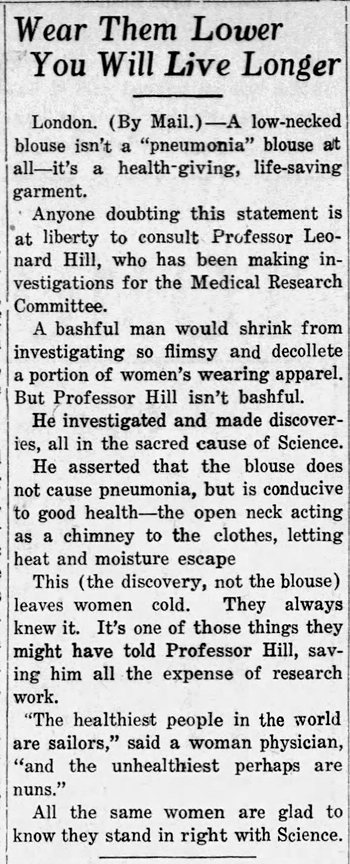
University Daily Kansan - Mar 18, 1920
Posted By: Alex - Sat Feb 05, 2022 -
Comments (3)
Category: Fashion, Health, 1900s
An Impressive Fall
This story is not quite so remarkable as Alex's tales of Empire State Building suicides who survived, but it will do.Source: The Times Dispatch (Richmond, Virginia) 01 Aug 1910, Mon Page 2
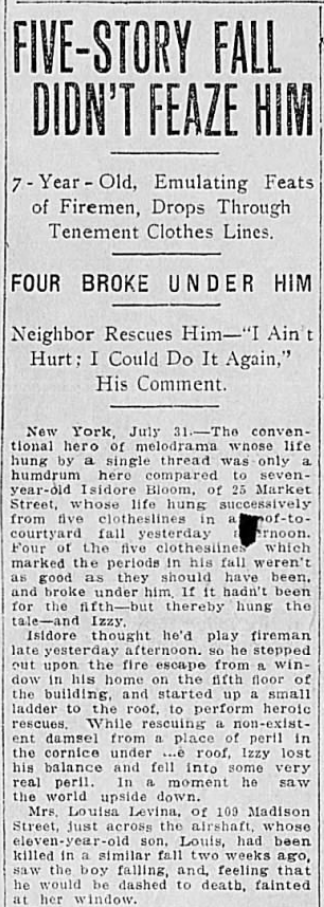
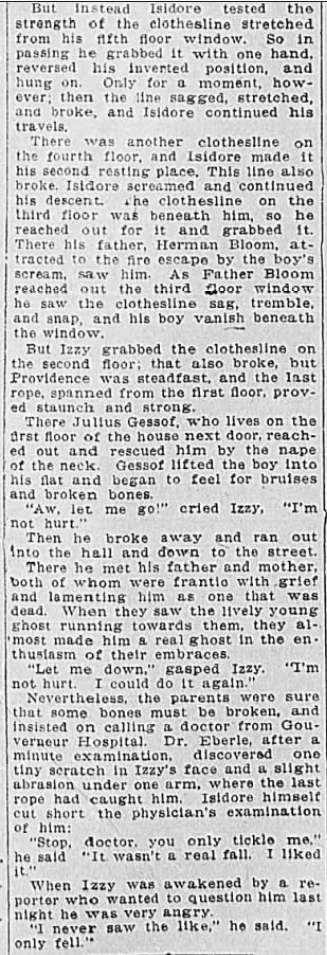
Posted By: Paul - Sat Feb 05, 2022 -
Comments (0)
Category: Daredevils, Stuntpeople and Thrillseekers, Domestic, Family, Danger, Risk, and Peril
February 4, 2022
Keeping a promise
I'd call this a misguided sense of honor.
Billings Gazette - Aug 30, 1991
Posted By: Alex - Fri Feb 04, 2022 -
Comments (1)
Category: Crime, 1990s, Ethics and Morals
| Get WU Posts by Email | |
|---|---|

| Who We Are |
|---|
| Alex Boese Alex is the creator and curator of the Museum of Hoaxes. He's also the author of various weird, non-fiction books such as Elephants on Acid. Paul Di Filippo Paul has been paid to put weird ideas into fictional form for over thirty years, in his career as a noted science fiction writer. He has recently begun blogging on many curious topics with three fellow writers at The Inferior 4+1. Chuck Shepherd Chuck is the purveyor of News of the Weird, the syndicated column which for decades has set the gold-standard for reporting on oddities and the bizarre. Our banner was drawn by the legendary underground cartoonist Rick Altergott. Contact Us |

